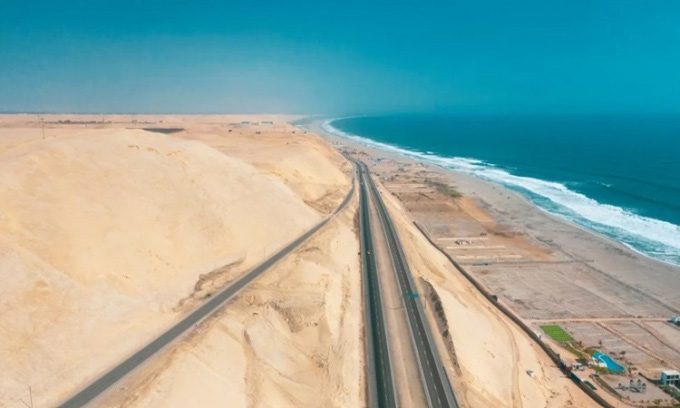According to the Guinness World Records, the Pan-American Highway is the longest road in the world, stretching 30,000 km from Alaska, USA to the southern tip of Argentina.
The idea for the Pan-American Highway was first proposed by the United States in 1923. While it was seen as an ideal project to connect nations, some opinions suggested it could also boost sales of American-made vehicles and increase exports to Latin America, according to IFL Science.

A section of the Pan-American Highway in Cañete, Peru. (Photo: rjankovsky).
In 1924, U.S. authorities invited 37 representatives from Latin America to Washington, D.C. to hear about the plan. After many years of discussion, they reached an agreement. The Pan-American Highway Agreement was signed in 1937 by Argentina, Bolivia, Canada, Chile, Colombia, Costa Rica, El Salvador, Guatemala, Honduras, Mexico, Nicaragua, Panama, Peru, and the United States. However, the construction process did not progress quickly. By the early 1970s, U.S. President Nixon announced that the intercontinental highway would be completed immediately, but many sections remained unfinished.
In fact, today, the Pan-American Highway is not fully connected, and it is impossible to drive its entire length. A significant interruption on the route is located in the Darién Gap, a 160 km stretch of land connecting Panama with Colombia. Surrounded by jungle and seasonal rains, there are no roads running through the Darién Gap.
The United States had committed to providing most of the funding to build the section of the Pan-American Highway through the Darién Gap in the 1970s, but the plan faced fierce opposition from environmental activists who feared it would be a disaster for local biodiversity and indigenous communities. Moreover, the area is frequented by armed militias, dangerous gangs, and drug trafficking criminals, making it extremely hazardous to traverse.
Despite this interruption, the Pan-American Highway still holds the Guinness World Record for “the longest drivable road.” Another contender for this title is the Asian Highway 1 (AH1), the longest route in the Asian Highway network, measuring 20,557 km from Tokyo, Japan to the Turkey-Bulgaria border, passing through South Korea, China, Southeast Asia, Bangladesh, India, Pakistan, and Iran. However, this road is also not continuous. There is a 942 km body of water separating Japan from South Korea, and residents cannot cross the demilitarized zone between South Korea and North Korea.
Meanwhile, Australia’s Highway 1 is the longest road that can be driven continuously and the longest national highway, encircling the entire island with a length of 14,500 km. It holds the Guinness World Record for “the longest continuous road.”





















































